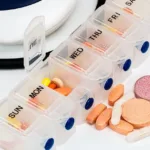Type 2 diabetes can worsen over time, making it more difficult for a person’s body to maintain glucose levels.
The body’s numerous cells become less receptive to insulin (known as enhanced insulin resistance), and the pancreatic cells that create insulin generate less of it (called beta-cell insufficiency).
This is not necessarily related to diabetes care and is unlikely to be preventable. When you need insulin for type 2 diabetes is our point of discussion in this article.
For many people, modifying lifestyle factors such as a lower-calorie diet and increased physical activity are critical to maintaining blood glucose levels that are stable and within a target range.
Healthcare experts may also advise persons with type 2 diabetes to add metformin, DPP-4 inhibitors, SGLT-2 inhibitors, or GLP-1 agonists to their treatment strategy to improve glucose control, lower A1C, decrease weight, or maintain heart and kidney health.
| You may also like to read: |
When do individuals with type 2 diabetes begin taking insulin?
Although every person’s experience with type 2 diabetes is unique, many people will start insulin therapy after 10 to 20 years.
This occurs when lifestyle changes and drugs fail to keep your glucose levels within the correct range.
You must begin therapy as soon as you can to prevent persistent hyperglycemia (high blood sugar). Because it can cause long-term health issues that can impair your heart, kidneys, eyes, and other organs.
People with type 2 diabetes may desire to use insulin for a variety of reasons, including:
- It can swiftly lower your blood glucose levels to a more healthy level. If your blood glucose level is abnormally high when you are diagnosed with type 2 diabetes, your doctor may prescribe insulin to drop your blood glucose level. This is a lot faster method than diet and exercise.
- It is less likely to cause negative effects than other medications: Insulin is a man-made version of a hormone that our bodies naturally make. As a result, it interacts with your body more naturally than drugs, resulting in fewer negative effects. Hypoglycemia is one of the negative effects.
- It might be less expensive [ref]. Diabetes drugs can be costly, but there are a variety of solutions available to people of various income levels. However, insulin is often less expensive than drugs (on a monthly basis), especially if your doctor prescribes many prescriptions.
Different types of insulin
Some insulin users must use both a basal (long-acting) and a prandial (rapid-acting or “mealtime”) insulin every day. Although others may just require a basal dose. Read on to discover your choices.
Basal (long-acting) insulins
These are intended to be administered once or twice daily to maintain a steady background level of insulin the whole day.
Basal insulins assist maintain blood sugar levels when you are not eating and throughout the night. But they do not cover carbohydrates (carbs) consumed for meals or snacks, or glucose increases after meals.
Prandial (rapid-acting or “mealtime”) insulins
These are administered before meals and operate swiftly to cover the carbs consumed and lower high blood sugar levels after meals.
Ultra-rapid-acting prandial insulins can lower glucose levels much faster in the body. Rapid and ultra-rapid insulins are also used to treat elevated glucose levels that arise or remain several hours after a meal.
Basal and prandial insulins
These are both analog insulins, which means their structures differ slightly from the insulin produced naturally in the body.
Certain properties of analog insulins can be beneficial to diabetics. Human insulin, on the other hand, was the first to be developed and is similar to that produced by the human body.
Regular (short-acting insulin) and NPH insulins are the two types of human insulin (intermediate-acting). These are typically less expensive than analog insulins and can be purchased without a prescription at some pharmacies [ref].
People with type 2 diabetes who are starting insulin therapy may only need basal insulin to manage their glucose levels.
Even though many people use both basal and prandial insulin, which is known as multiple daily injections of insulin (MDI).
It consists of one or two injections of basal insulin each day as well as prandial insulin at meals. In general, basal insulin results in less hypoglycemia and requires fewer injections.
For these reasons, basal insulin is frequently advised by medical practitioners when you initially begin insulin therapy.
| You may also like to read: |
How should I administer and modify my insulin doses?
It’s critical to understand the various insulin administration techniques and the types of insulin that can be administered.
Although there are various ways to take insulin, injection with a syringe is currently the most popular for persons with type 2 diabetes.
Other methods include pens, pumps, and inhalers. Numerous apps exist that can assist you in calculating your insulin doses.
Insulin pens:
Compared to a vial and syringe, insulin pens are thought to be more user-friendly and convenient.
The available insulin pens come in a variety of brands and designs. People can manage insulin administration and track it with the aid of smart pens, which are becoming more widespread.
You can use them to link to your smartphone. You can also keep track of when you last took an insulin dose, how much you took, and when to take your next dose.
Insulin pumps [ref]
These are implanted in your body and can be configured to provide rapid-acting insulin throughout the day to meet both basal and prandial insulin requirements.
When you need to take insulin for a meal or to treat high blood glucose, the pump’s calculators can help you estimate the proper amount after you’ve configured them with your particular insulin pump settings.
Inhaled insulin:
This is a fast-acting insulin that can substitute insulin required for mealtimes and high-glucose corrections. It is administered through an inhaler and functions similarly to injectable prandial insulin.
This is intended for diabetics who do not wish to inject prandial insulin but not for those who solely take basal insulin. Afrezza, the ultra-rapid-acting mealtime insulin, is the only approved inhaled insulin on the market.
Because of the long-term lung-related side effects and availability, it is rarely used to treat diabetes.
You should adjust your insulin regimen to suit your demands and way of life. With the help of your medical team, you will need to adjust the timing and dosage of your basal insulin.
Depending on your fasting glucose levels, you can be advised to begin insulin therapy with a low dose. You can gradually raise it once or twice a week.
| You may also like to read: |
Insulin for Type 2 Diabetes: In a Nutshell:
| Indications of Insulin for Type 2 Diabetes | Why you need Insulin for Type 2 Diabetes |
| Hyperglycemia despite taking maximum oral diabetes medicines | Insulin is indicated for uncontrolled diabetes with metformin or other oral diabetes medicines. It is considered essential when a person with diabetes type 2 is on two or three oral diabetes medications and/or an injectable GLP-1agonist |
| Diabetic ketoacidosis | Patients with type 2 diabetes have progressive Beta-cell loss. Once the pancreatic reserves are so low that they can not meet the body’s requirements, DKA may develop. Insulin in such patients is essential. |
| Perioperative | Insulin can be easily titrated and has no drug interactions with medications used during anesthesia. In addition, stress due to the surgical procedure may necessitate insulin use to avoid severe hyperglycemia |
| Pregnancy | Pregnant women with type 2 diabetes are usually treated with insulin and metformin. |
| Markedly symptomatic patients | Type 2 diabetics who are markedly symptomatic and have lost significant weight may need insulin to improve their health and reverse diabetic cachexia |
| Kidney Disease | Most patients who have a GFR of less than 30 ml/minute are started on insulin. Very few patients may continue oral medicines like Linagliptin, low-dose Farxiga (Dapagliflozin), and short-acting insulin-secretagogues like Repaglinide |
| Liver Disease | Advanced liver disease (Child Class C) is an indication to stop oral diabetes medications and switch to insulin. |
| Heart failure | Insulin is one of the few drugs, in addition to SGLT2 inhibitors and GLP-1 agonists, which is considered safe and effective in patients with heart failure |



